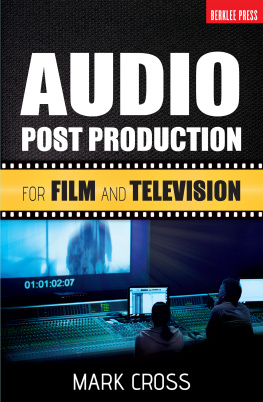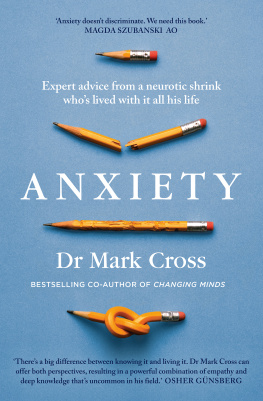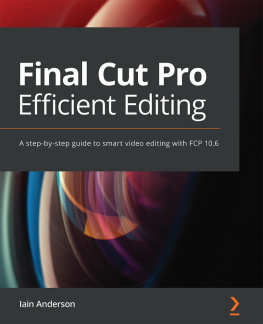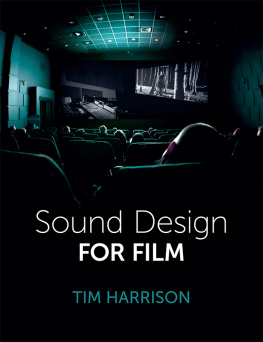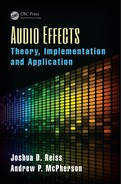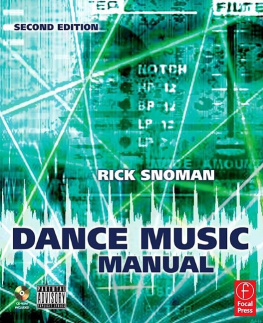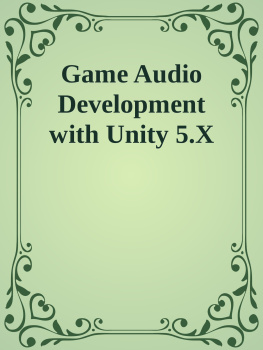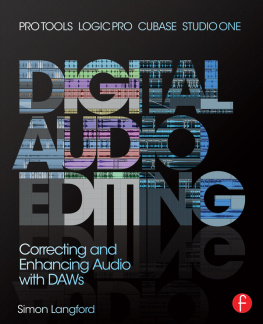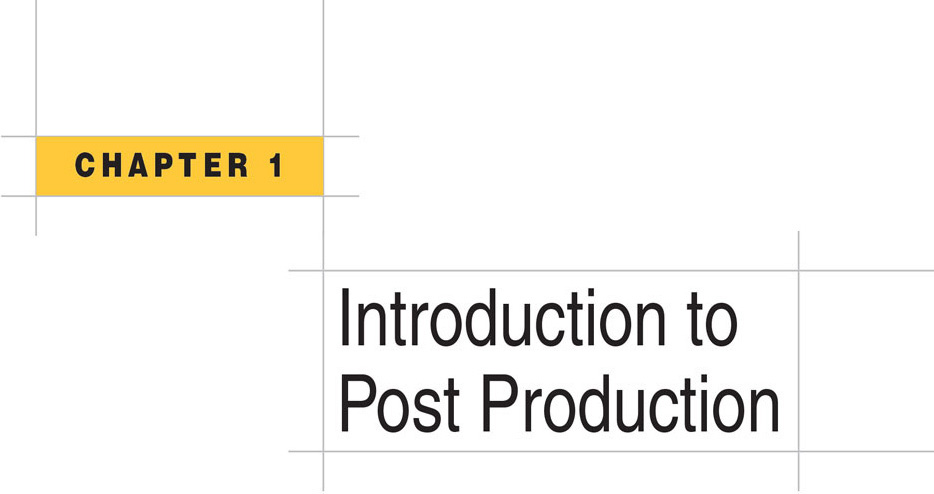7777 W. Bluemound Rd. P.O. Box 13819 Milwaukee, WI 53213
Contents
Glossary of Production Dialogue
and ADR Terminology
Prepare Physical Studio Space
for Voice Recording
This book is dedicated to my wife Megan and our two daughters Quinn and Keeley for their continued love and support.

So, you want a job in audio post production? Welcome to the roller-coaster world of a career in audio. Up you go: The gear used to make sound for picture is more affordable than ever. Independent filmmakers and producers of content for picture, broadcast, and live events can live and work outside the major production hubs of the past. Down you go: The gear is evolving at a breakneck pace. Hardware platforms, new software, and version changes happen with great urgency, so that gear providers can have a product to sell. Its harder than ever for users to keep up. In addition, budgets and shifts in production costs have resulted in the slow death of mentorship. Those wishing to create careers in audio post must rely on printed material, formal education, and the sometimes questionable wisdom of the Internet to avail themselves of the rich heritage, sum of knowledge, and solid professionalism needed to become a real pro.
As a professional recording engineer, journalist, and educator, I have an intimate relationship with the gear used for audio production and a unique view of the changes that have occurred in our industry in the last ten years. Its more important than ever to be sure you have a qualified and trusted source of knowledge to get the information right and assure yourself a place (and a job) in a career youll love. Thats where this book comes to the front line in your battle to stay abreast of whats happening now and in the future of audio post.
Ive known Mark Cross for over fifteen years as a friend, brother in audio pain, and a professional with an enviable list of credits. Mark has mixed top-notch movies and television shows for the biggest names in the business and has been asked back time and time againa sign that hes doing it right. Mark can also tell a great story, and thats what hes done here. He doesnt forget where it all started, laying out the history of film sound, woven with accurate and entertaining chapters on the modern technology used to practice the trade from the first push of the record button to final delivery. Its a good read, and Im proud of Marks accomplishments in this book. Enjoy.
Kevin Becka, Technical Editor, Mix Magazine , Director of Education, Conservatory of Recording Arts and Science
Audio post production plays a major role in any visual presentation, whether youre making a simple home movie, an industrial corporate presentation, a television or radio commercial, or working on a feature film. The audio is key in making the visual work. Making sure that the dialogue is clear and intelligible, that the sound effects and Foley complement the action of the video, and that the music works to move the overall mood can make or break any project.
The innovation of digital technology in media has had a tremendous impact on audio post production for film and television. This industry is now driven by the advent of digital audio, video, and effects within digital audio workstations (DAWs). The one thing that remains consistent is the need for motivated individuals who are educated and up-to-date in the processes and applications of this technology. If you are planning on working in this field, it is imperative that you master these techniques as well as developing creative problem solving skills.
This book offers a comprehensive overview of audio post production including the four basic elements: dialogue, music, sound effects, and Foley effects. By learning the tools and strategies used by working professionals, youll be able to effectively participate in this fast-paced environment.
Post production is a team sport. It works best when everyone works together. Each member of the team makes a difference, and the whole is only as good as the sum of its parts. The final production, theatrical release, or episodic broadcast relies heavily on every step of the process, from inception to completion.
This book is very much in the same vein. It could not have been made possible without a cast of behind the scene professionals who selflessly offered their time and insight to help convey educational concepts specifically for this book. As you can see by the following credits, you are learning from the best of the best and for that we must give special thanks to:
Roll the credits, please.
Megan Murphy, Co-Producer, Curb Your Enthusiasm
Erin OMalley, Producer, Curb Your Enthusiasm
David Van Slyke, SFX, Mixer, CSI, Mystery Alaska
Earl Martin, Mixer, The Hills, Curb Your Enthusiasm
Frank Morrone, Mixer, Lost, Cider House Rules
Phillip Rodrigues Singer, Foley Artist, Rescue Me, Blown Away
Carli Barber, Music Editor, Greys Anatomy
Lisa Jaime, Music Editor, Hairspray, Panic Room
Bill Macpherson, Location Sound, U2: Rattle and Hum,
Curb Your Enthusiasm
Vince Schelly, Boom Operator, Curb Your Enthusiasm
Wendy Spence Rosato, Producer, ER, Third Watch
Rich Weingart, Mixer, Heroes, Lost
Kris Emery, Production Director, Comedy Central
David Knauer, Mixer/Tech, Audio Perception
Tristan Mathews, Coordinator/Director, Curb Your Enthusiasm,
Nothing for Something
Katie Rose, Foley Artist, Beauty Shop, The Specialist
Dennis Sands, Scoring Mixer, Dreamgirls, Finding Nemo
Maciek Malish, Dialogue Editor, Lost, Starship Troopers
Josh Chase, SFX Editor, The Middle, Scrubs
Eddie Rogers, Assistant Dialogue Editor, Freeway, Lost
Martin Davich, Composer, ER, Third Watch
Orlando Rashid, Editor, Mixer, Jamie Foxx
Mehdi Hassine, Editor, Mixer, Sigur Ros
Cecilia Perna, Foley Mixer, The Middle, Scrubs
Steven Saltzman, Music Editor, Straw Dogs, Priest
Larson Studios, Hollywood, CA
RH Factor Post Production Sound, Burbank, CA
Gray Martin Studios, Santa Monica, CA

